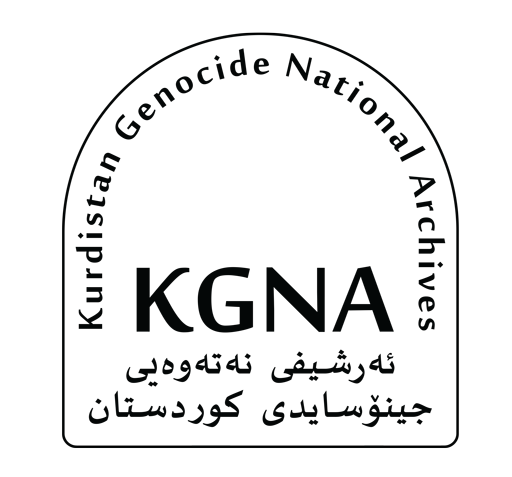“In the autumn of 1975, as a result of the Algiers Agreement between Saddam Hussein and the Shah of Iran, which aimed to end the Kurdish September Revolution led by the late Mullah Mustafa Barzani, one of the stipulations was to establish a security belt extending more than 20 kilometers deep along the border between the two countries. This included evacuating the area and relocating villages to forced labor camps, a measure that was implemented only in Iraq.”
In 1978, the region of Horaman and all its villages were relocated, except for Biyara and Tawela. However, following the start of the Iran-Iraq war in 1981, these areas, too, were evacuated to forced camps and destroyed due to continuous bombings. In other words, the Horaman region became prohibited, and all its inhabitants were either in Halabja or forced camps.
With the onset of the Iraq-Iran war, the Ba’ath regime tightened its security belt. It expanded the border region by pressuring the villagers and relocating the inhabitants of the border villages. As Halabja was located on the border of Iraq and Iran, the Ba’ath government began relocating the villages of Halabja and those near the Iranian border.
In late April 1987, the regime, through village authorities, warned all villages to evacuate and relocate to cities to prevent them from serving as rest areas for the Peshmerga. This decision was initially tough for the people of the region. By mid-1987, the threats peaked, mandating the border villages and those near Halabja and main roads to be relocated.
All these actions followed Saddam Hussein’s dictatorial order appointing Ali Hassan al-Majid as the head of the Ba’ath Party’s Northern Organization, granting him absolute authority in all autonomous regions, including Kurdistan, with decree number 160 in March 1987.
According to their decision, the presence of humans and animals in prohibited areas was utterly forbidden, with open and unrestricted shooting allowed, not limited by any directives.
The people of Halabja and its surroundings repeatedly sought explanations from the Ba’ath regime officials in Halabja about the reasons for these relocations but received no response. As a result, the people, intellectuals, and youths of Halabja and other cities in the region decided to demonstrate and rise against this decision. Therefore, the people of Halabja, Howarabad, and Sharazor organized demonstrations against this exile campaign on 13/5/1987 in Halabja.
The demonstrations began in the Kani Ashqan neighborhood and reached the Kani Qulka. The Ba’ath regime, aware of the spread of the protests, ordered its army, security, and intelligence forces to attack the demonstrators, who were fired upon indiscriminately. The first demonstrator was martyred in a shooting in the middle of the market from a Dushka machine gun installed on the roof of the Halabja Saray. Dozens of others were injured and transported to the Annab Hospital.
Subsequently, the Ba’ath regime carried out blind shelling of the neighborhoods of Halabja with helicopters, especially places where demonstrators were suspected to be hiding, destroying several houses and killing and injuring others.
Ali Hassan Majid, who was responsible for the northern organization of the Ba’ath Party at that time, ordered that the wounded in Annabin Hospital be killed, and any area where gunfire was heard should be bulldozed, bombed, or demolished. He also ordered the destruction of the Kani Ashqan neighborhood, which had more than 350 families, using TNT, rendering it and its inhabitants homeless and displaced.
Based on this decision, military forces surrounded the Halabja Hospital in the evening, arresting the wounded and their companions, totaling 25 people, and transferring them to the Halabja military base. According to witnesses, the detainees, blindfolded and bound, were shot and buried in a mass grave located behind the military headquarters between Halabja and the village of Bamook. After the 1991 uprising in Kurdistan and the destruction of the army base, this mass grave was discovered years later as the people of Halabja were rebuilding homes and municipal projects. The victims were identified through their identification cards and were related to the rally and uprising of 13/5/1987.
On the same day, 26 citizens returning from Horaman and Halabja between Halabja and Sidsadiq were arrested and buried in the military camp of the village of Shanedar. Concurrently with the uprising and demonstrations in Halabja, the people in the towns of Sirwan also rose against the oppression and tyranny of the regime.
On that day, the people of Sidsadiq were ready to organize demonstrations supporting the people of Halabja. Still, regime forces quickly confronted them, leading to the martyrdom of eight citizens. The Hasar neighborhood in the city of Sidsadiq was demolished and destroyed.
During the uprising on May 13, 1987, the Ba’ath regime committed numerous atrocities, including the destruction of over 350 homes in Kani Ashqan, one of the oldest neighborhoods in Halabja, using TNT. The neighborhood was leveled to the ground, rendering its inhabitants homeless and displaced. The regime also destroyed the Hasar neighborhood in Sidsadiq. Additionally, 79 people were ruthlessly executed and buried alive, hundreds were injured, and more than 3000 people were displaced from their homes.
After a week of suppressing demonstrations at the border, thousands of people fled the hell of the Ba’ath regime to Iran, crossing the border at night. This was the first group of Kurdish refugees to migrate to Iran after the migration of Kurds in 1974 during the September Revolution against oppression and tyranny.
The case of the Kani Ashqan Crime in the High Iraqi Criminal Tribunal
After the regime’s fall, under case number (2/J5/1388), Judge Aboud Mustafa Hammami presided over the fifth branch, with two lawyers (Bakr Hama Sadik and Goran Adham) managing the case.
Judge Aboud Mustafa Hammami, after three sessions and hearing several witnesses, declared in the last session, which was the fourth on the date 27/1/2010, that the main accused in this case, Ali Hassan Majid, was executed on 25/1/2010, and the case of the 1987 uprising and the Kani Ashqan neighborhood was closed without result.

